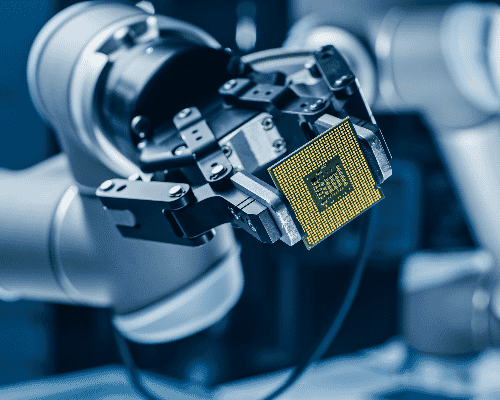
Ultimate Guide: What Is A Rotary Screw Compressor?
March 13, 2024
How Does a Rotary Screw Industrial Vacuum Pump Work?
March 27, 2024The History of Air Compressors
Kaishan USA | March 20, 2024 | Uncategorized

Air compressor history began nearly four millennia ago (yes, really!) with air-moving devices like this bellows.
Believe it or not, air compressors have a long history, dating back thousands of years to some of the earliest epochs of human history.
Our ancestors started using bellows nearly 4,000 years ago to supply the oxygen they needed for primitive metallurgy.
Compressed air was used more commonly during the Industrial Revolution, with blowing machines driven by water wheels or hydraulics.
However, it wasn’t until the end of the 19th century that air compressors came into large-scale use, powering pneumatic tools. There even was an attempt to provide compressed air to power cities.
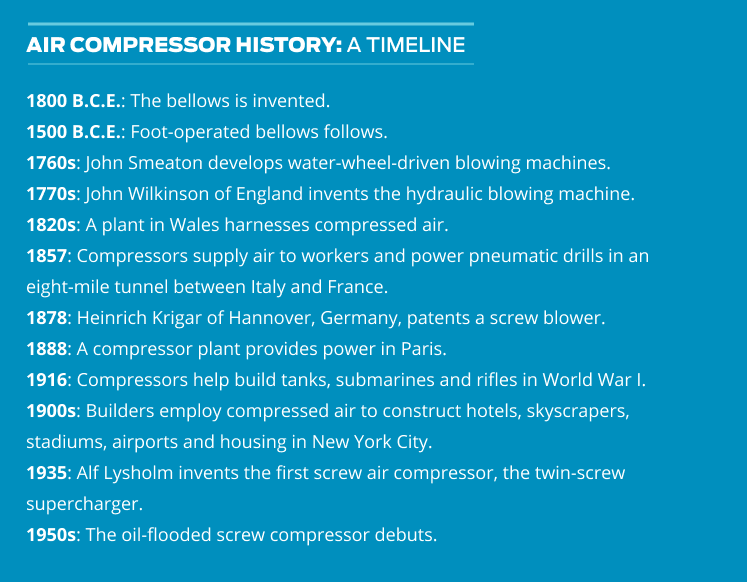
The technology blossomed significantly in the 20th century, supplying power for almost every industry that made modern life possible.
Rotary Screws: A New Page in Air Compressor History
By mid-century, most applications of compressed air were powered by reciprocating compressors. While efficient, air-cooled reciprocating compressors require a lot of maintenance and repair parts are expensive. Plus, they must be shut down frequently to cool off, effectively limiting their duty cycle to 50% (large, water-cooled recips can go to a 100% duty cycle, but have high maintenance costs). And many customers complain that they are noisy.
Rotary screw compressors are a relatively newer development, invented in the 1930s. Unfortunately, they took some time to catch on, as most existing manufacturers and users continued to focus on reciprocating compressors (and the aftermarket business for valves, rings and labor to rebuild).
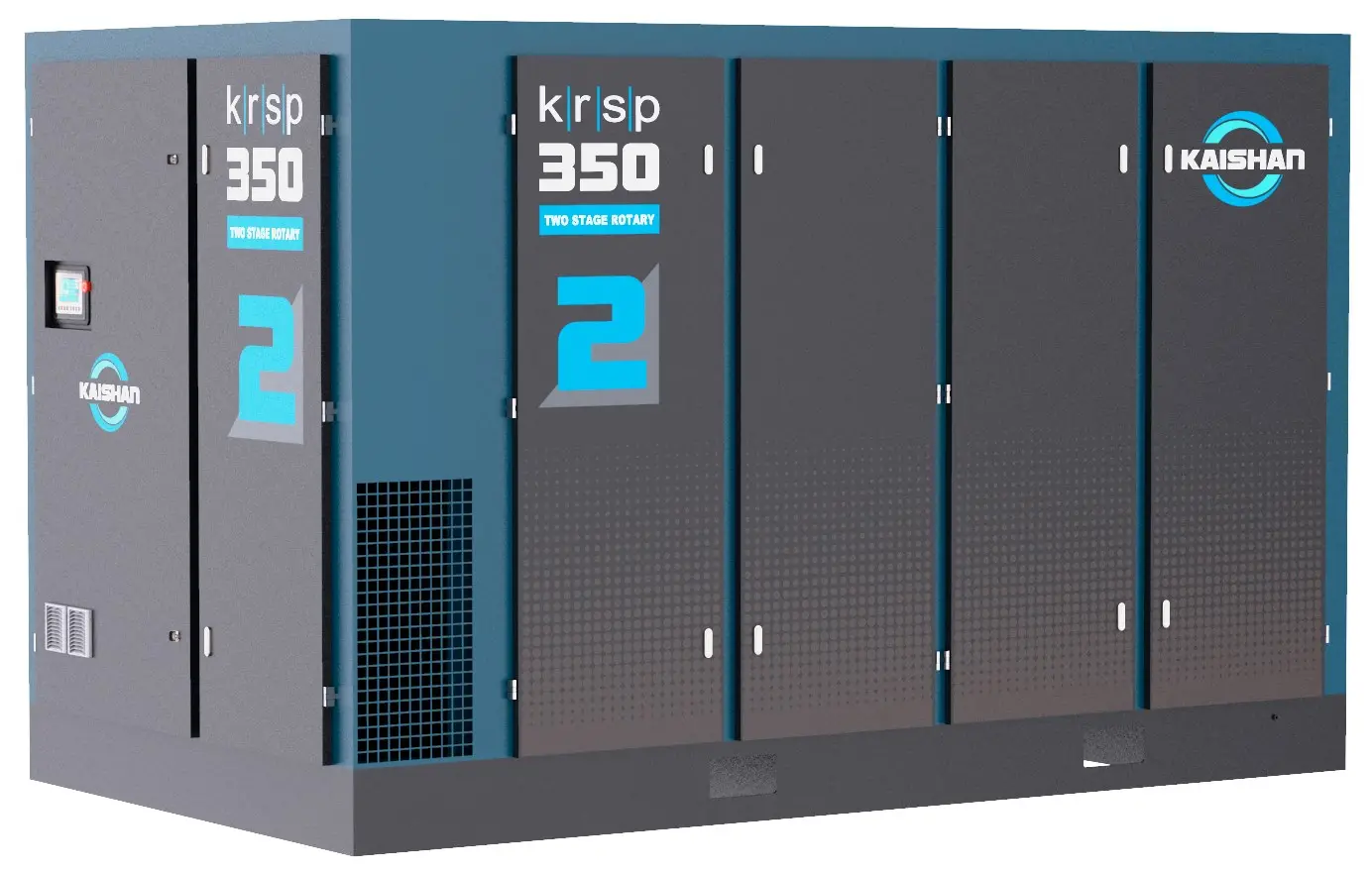
Rotary screw compressors, like Kaishan’s KRSP2 two-stage premium rotary screw air compressor, advance the state of the art, delivering high-quality compressed air with long-term reliability.
Eventually, however, manufacturers saw enough potential in the 1970s to offer rotary screws as an alternative to their reciprocating “cash cow.” And the technology blossomed to the point that rotary screw compressors are now the machines of choice in most industrial applications.
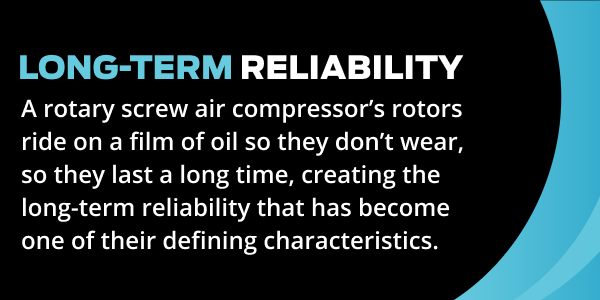
Rotary screw compressors have two rotors that revolve in a compression chamber and pressurize the air until it reaches the desired pressure. The rotors ride on a film of oil so they don’t wear, so they last a long time, creating the long-term reliability that has become one of the defining characteristics of rotary screw compressors.
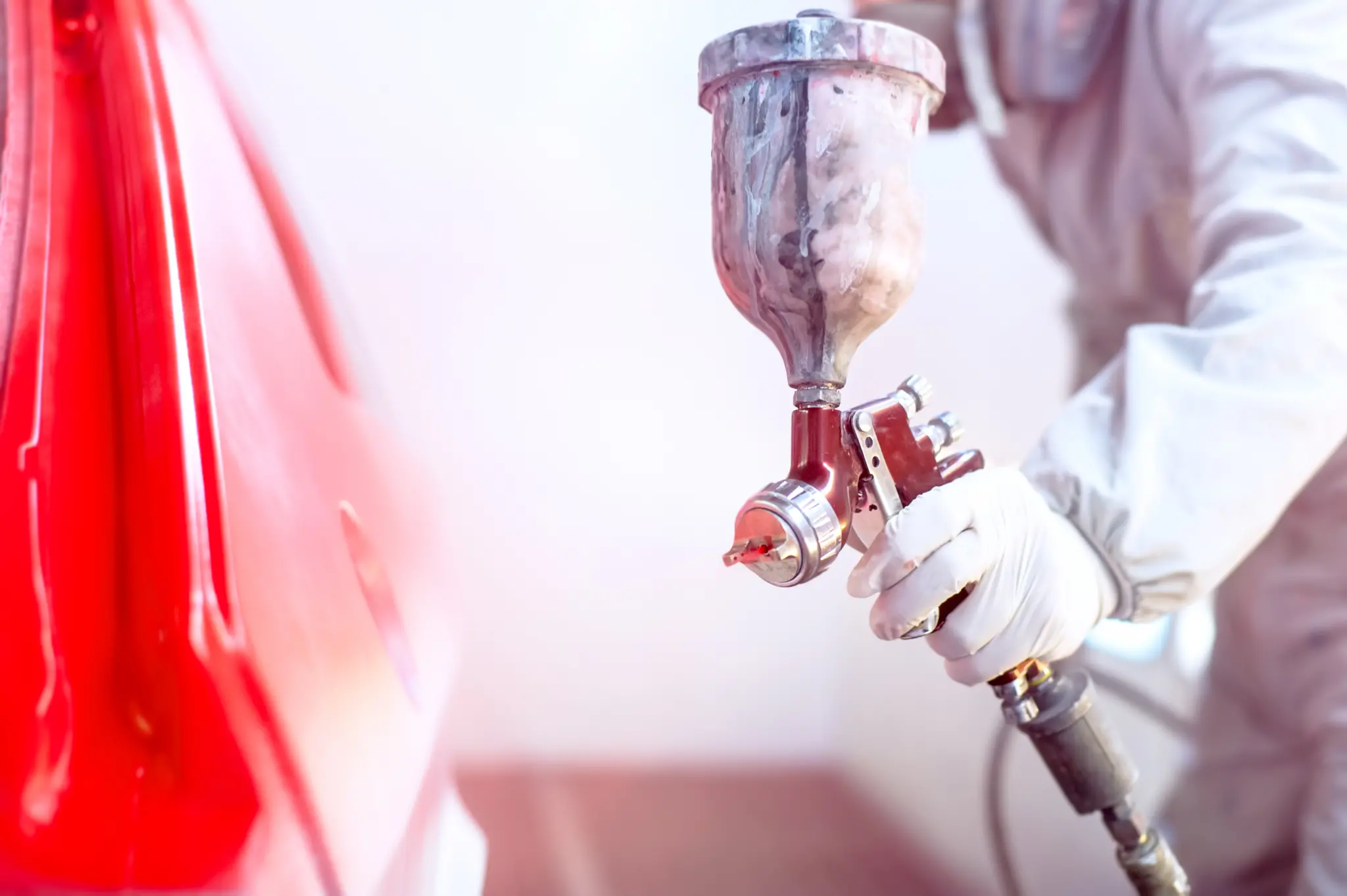
When you’re painting, you need an even flow of compressed air at a constant pressure to deliver that mirror finish everyone wants. Only a rotary screw air compressor will do that.
And because they have fewer moving parts, rotary screw compressors are more reliable than other types of compressors. They can handle a 100% duty cycle, ideally operating as close to full load as possible. Best of all, they deliver high-quality air, meeting the needs of many different applications. There are even oil-free machines, like our new KROF two-stage rotary screw air compressor, for areas where the air comes in direct contact with food. Or where high-levels or purity are required, such as electronics or healthcare.
For more on rotary screw compressors, read our blog post, “Ultimate Guide: What is a Rotary Screw Compressor?”
Most Recent Additions to Air Compressor History
Over the years, manufacturers have harnessed advances in machining technology to grind the profile of a rotary screw air compressor’s rotors to tighter tolerances. Improving efficiency and therefore reducing operating costs.
However, two recent advances—newer lubricating fluids and variable-speed drives—have revolutionized the technology.
Lubricating Fluids
Oil-lubricated rotary screw air compressors rely on oil to lubricate the bearings, seal off the air flow between the rotors and the stator and remove the heat of compression, keeping the compressor and the air flow cooler. Oil-free machines, like our KROF, are an exception designed to offer food and beverage processors and semiconductor fabricators the benefits of rotary screw technology without introducing oil to the pressurized air flow.
As a result, oil plays such a crucial role we call it the lifeblood of a rotary screw air compressor. Initially, operators used automatic transmission fluid to lubricate their screw air compressor. But ATF had some significant limitations, requiring an oil change after 1,000 hours.
That’s why the development of specialized lubrication fluids in the 1970s and 1980s was such a significant advance for rotary screw compressors. And newer synthetics more closely match the demands of rotary screw air compressors and require only one change per 8,000 hours.
Lubricants Specially Formulated for Kaishan Rotary Screw Air Compressors
Our KTL-8000 rotary screw compressor oil has been formulated specifically for Kaishan compressors. It is a blend of polyalphaolefin and polyol ester formulated with antioxidants—liquid additives that combine with the base oil to prevent oxidation.
Oxidation produces acids that cause varnish or solids to form in the oil. If you don’t care for the oil, keeping it clean and relatively cool, it starts to varnish. And when varnish starts to develop, it attacks the bearings and damages the airend.
KTL-8000 lasts longer than even today’s commonly used mineral-oil-based products. As a result, you’ll use less oil and have less oily waste for disposal, a benefit to the environment. For specific information on KTL-8000, view the safety data sheet.
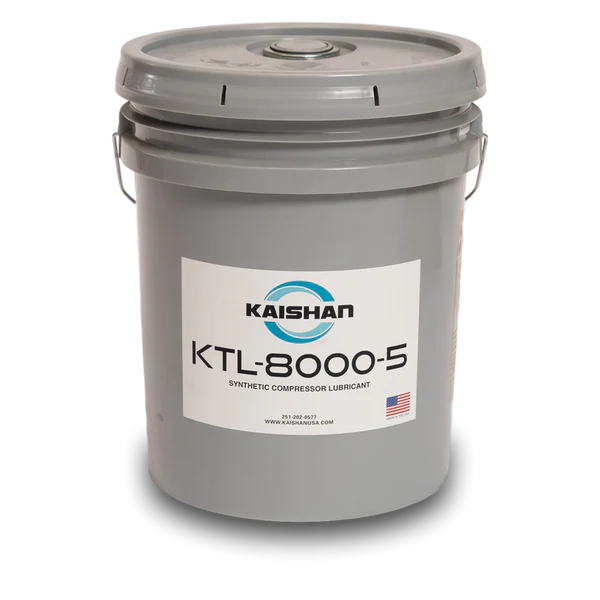
Kaishan’s KTL-8000 rotary compressor oil is specially formulated for Kaishan compressors. View the safety data sheet.
And for more on the development of specialized rotary screw air compressor lubricants, read our blog post, “Choosing the Right Compressor Oil.”
A second significant advance in air compressor history was the application of variable speed drives to rotary screw air compressors.

Our new KROF two-stage rotary screw air compressor, can be equipped with a variable speed drive, providing a soft start and the ability to match air flow to demand.
Variable-Speed Drive
The application of VSD technology to rotary screw air compressors has enabled many companies to save significant amounts of energy. And energy-related cost.
VSDs allow rotary screw compressors to operate more efficiently at part-load conditions. It is almost tailor-made for rotary screw compressors, which can easily change speeds. You really can’t apply VSD technology to reciprocating compressors because you can’t adjust speeds the way you can with a rotary screw compressor.
And energy savings are not the only benefit. VSD compressors can earn rebates, allow soft starts and offer better control of your entire compressed air system. For more information on the energy savings you can achieve with VSD compressors, read our blog post, “How Variable Speed Drive Rotary Screw Compressors Save You Money.”
Not for Everyone
But there are concerns. First, VSD air compressors cost more than their fixed-speed counterparts, so they are not cost-effective for smaller applications or for compressed air systems where there is little to no variation in demand.
And, like any electronic device, VSDs can be sensitive to harsh, demanding environments, so we do not recommend them in environments that are hot, dirty, dusty or wet. And especially not outdoor installations.
However, VSD air compressors deliver significant energy savings for the right applications. For more on VSD technology, read our blog post, “Variable-Speed vs. Fixed-Speed Air Compressors.”
Join a Storied Tradition
The advances in fluid technology have increased the lifespan and reduced the maintenance cost of rotary screw compressors. And variable-speed drives allow a rotary screw compressor to operate more efficiently at part-load conditions.
Together, they help make compressed air an essential part of your total energy strategy.
If you’re ready to become part of air compressor history, Kaishan can help. We work with a nationwide network of independent distributors, who can help you determine the best way to meet your compressed air needs. These factory-trained air compression experts can service your air compressor system without a problem.
Key Takeaways
-
- Air compressors date back thousands of years.
- Rotary screw compressors turn a new page in air compressor history.
- Two recent advances have revolutionized rotary screw air compressors: newer lubricating fluids and variable-speed drives.
- Specially formulated lubricating fluids now require only one change per 8,000 hours.
- VSDs allow rotary screw air compressors to operate more efficiently at part-load conditions.
Let Us Help
Selecting the right rotary screw air compressor is critical to the success of your compressed air system and all the processes that rely on it. If you need help, get in touch with the experts at Kaishan. Contact us today.
Random stat or
customer quote
textXXtext
text
Believe it or not, air compressors have a long history, dating back thousands of years to some of the earliest epochs of human history.

